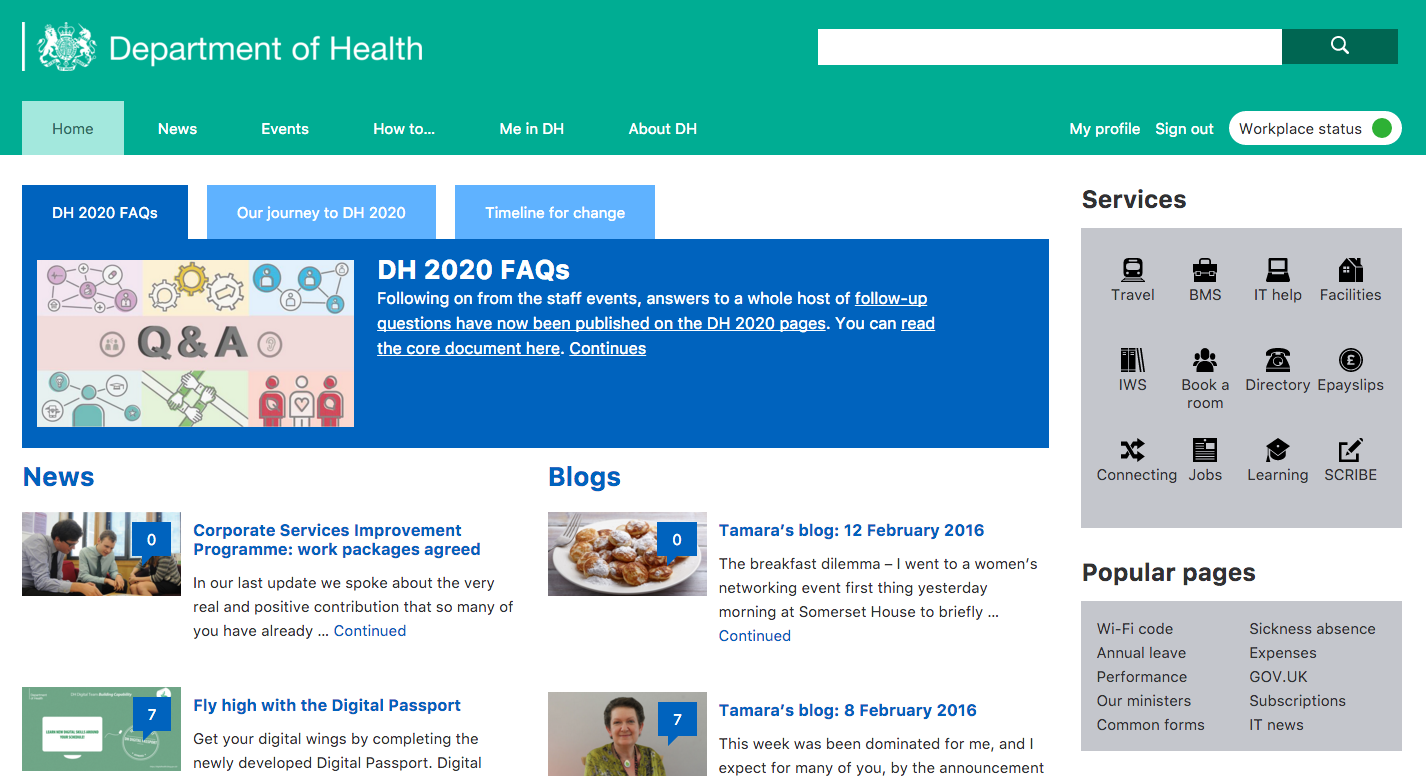
Six months ago I made a career pivot from policy making to product management. The roles require a similar mix of empathy and politics, so I feel I’ve taken to it reasonably well. Alongside a deep understanding of Internet-enabled technologies, a notable difference is how much and how effectively product management makes use of specific tools and methodologies to solve problems.
So here are ten techniques I would bring into a policy team if I went back. If any of the terms don’t make sense, Ben Stevens from the Home Office has posted a handy glossary.
- Work in sprints. Choose a time period of 1 or 2 weeks to help give structure to the team’s work. Get everyone together at the start of the sprint and agree the things you are going to focus on completing in that time, remembering that new tasks will come in too. This is called sprint planning.
- Hold ‘stand-ups’ over the course of the sprint, and ‘retrospectives’, and ‘show and tells’ at the end of it. Don’t be spooked by the language. These are just meetings, so not exactly an alien concept to policy makers. There’s no need for me to repeat better guidance elsewhere on this, except to endorse how useful they are as an ensemble.
- Get a wall. Every team needs a wall. I managed a major house renovation last year and even had a wall (this is not a joke). At its simplest this is expressing a task on a Post-It note, fixing it to a nice flat surface that people can gather around, and moving the tasks through columns labelled ‘doing next’, ‘doing now’, and ‘done’. Do this, and then feel the energy and sense of achievement coursing through the team as they deposit card after card in the done column at each stand-up.
- Create genuinely multidisciplinary teams. I spent some time shadowing my mentor who works on NHS.UK Alpha a few weeks ago. It’s a full-blown agile team, replete with product manager, delivery manger, content writers, designers, and developers. Having such expertise around a table enabled them to do magical things, like designing the key features of a GP look-up service, in record time. My experience of policy is usually hierarchical group of something akin to project managers. Other experts tend to be in a box somewhere, wheeled out for special occasions. It also now seems amazing to me that design thinking in policy is still seen as the cutting edge while it’s de rigeur in digital.
- Make it someone’s explicit responsibility to knit the team. The mantra goes, “the unit of delivery is the team”, and commensurate effort is placed in getting that team working brilliantly together. My experience working in policy teams is that if they are working great, then great. But if they are not, the response is usually a shrug and sporadic suggestions for ‘more social events’. Digital methodology encourages constant communication between the team using stand-ups. It celebrates successes through show+tells, and does a thorough job of learning from failures through retrospectives. The result is a team completely aligned around an objective, with everyone feeling they are part of something important, and fantastic pace of delivery. Tasks fall to the team not individuals. This reduces risk of single point of failure.
- Separate responsibility for day-to-day delivery with big picture and vision. In digital there are overlapping and complementary roles called product manager and delivery manager. The former focusses on macro issues: vision, roadmap, stakeholder management. The other focusses on micro issues: unblocking the obstacles the team faces day-to-day, and doing the team coaching I describe above. This structure recognises something important about our minds being poor at doing two things at the same time. It’s very effective.
- Try out some new collaborative tools. Digital teams more naturally have their fingers on the pulse of internet-enabled tools to facilitate team communication, prioritisation, or collaboration. I know IT systems can create barriers to this; but in an age where everyone has a smart phone it’s not hard to find workarounds. If you had to pick any, for me it is Slack. There’s a bit of a backlash against Slack at the moment (Slacklash?), but frankly I’m still at the crest of the wave of appreciation that sees how much more efficient than email is at enabling team interaction.
- Prioritise properly. Product recognises you can’t do everything, so have a plethora of techniques for deciding what comes next. Do a few things well rather than lots of things mediocrely, and be rigorous in your approach to choosing which those things should be.
- Clap more. Digital teams religiously clap their teammate’s or others’ presentations. This is not only courteous, but sends the presenter away with those few extra endorphins that make it all seem worth it.
- Be agile. Note the small ‘a’. My simplest interpretation of this is understanding that for almost everything, your first answer could well be wrong. Doing something and then testing it is better than trying to get it perfect first time. As long as it is labelled as such, it is fine to say something is a prototype or early version and will be iterated, improved, or even binned.
None of these suggestions are especially complicated. But they can be tough to implement in teams unfamiliar with the language and culture. Digital teams should help with this where they can, as forming good habits should not solely be the preserve of digital. They should be for everyone.
I’d be delighted to give my novice advice to any policy makers, so do get in touch if it would help. Hat tips to Lisa, Matt, and Kylie for product coaching, andBenji for delivery management advice.
